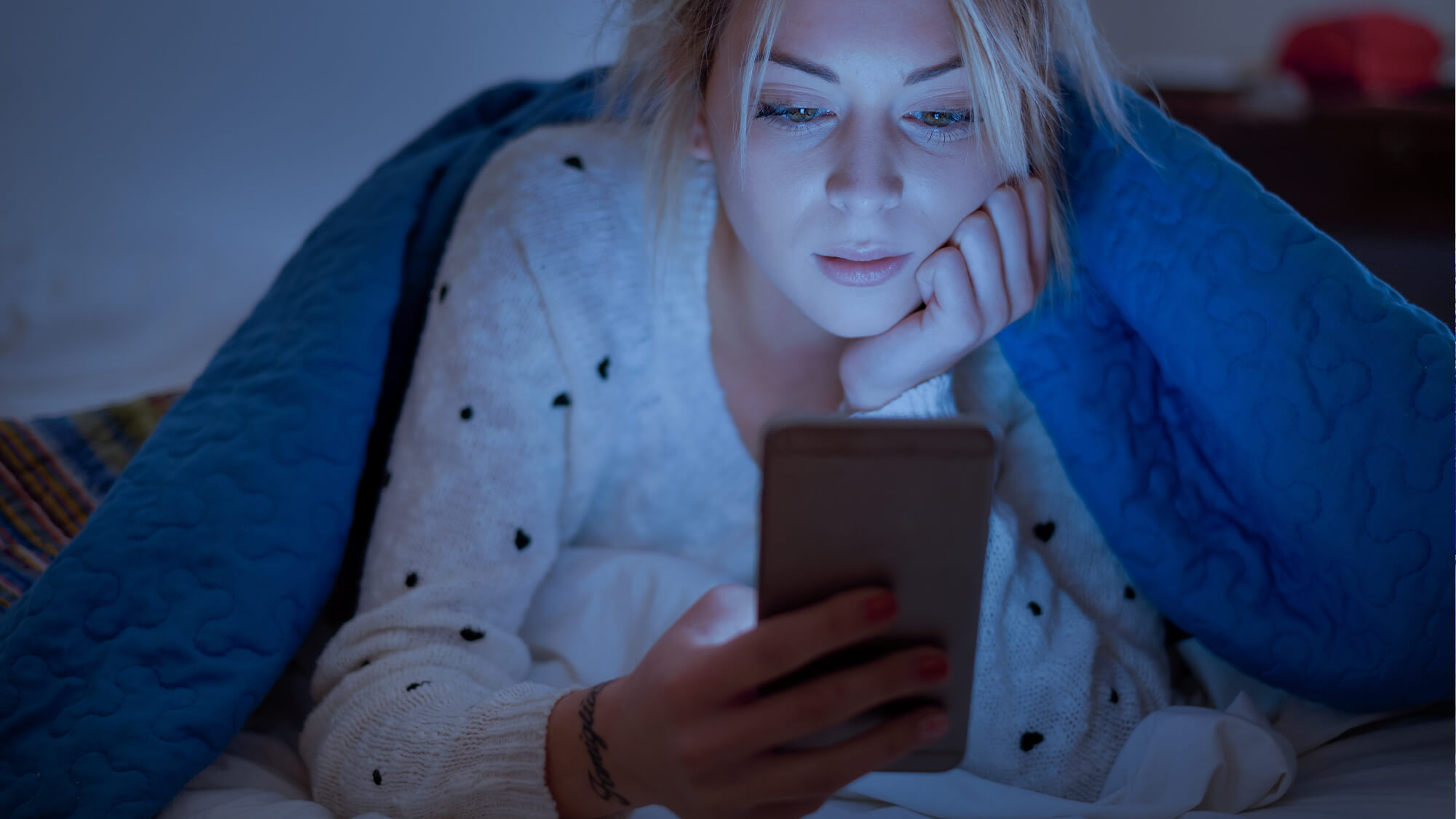Blue-violet light is emitted by most of the devices we use every day, including computers, smartphones and other electronic devices that use LEDs. It is potentially harmful to your health, especially the eyes. What exactly are the negative effects of blue-violet light and how can we protect ourselves from it?

The two blue light frequencies: blue-violet and blue-turquoise light
Before we begin, it is important to know that there are two types of blue light frequencies: blue-turquoise light and blue-violet light.
The first is not dangerous at all. It is found in nature, especially in the sky, just after a sunset. It even has relaxing properties, improves your mood and helps you relax in the evening before going to sleep.
Blue-violet light, on the other hand has a shorter wavelength, which makes it more intense and much more harmful if overexposed. It is emitted by the LED screens around us: our televisions, smartphones, computers, tablets and other digital devices with screens.
What are the health effects of blue-violet light?
Numerous studies have demonstrated and described the harmful health effects of blue-violet light.
For example, the latest study by the ANSES (France) in 2019 confirms three troubling health effects:
- First, the toxicity of blue light for the eyes. The phototoxic effects of blue light can lead to impaired vision. Long-term effects in case of prolonged chronic exposure may even promote the development of age-related macular degeneration (AMD).
- In addition to these harmful effects on eyesight, blue-violet light also disrupts circadian rhythms, which regulate the sleep-wake cycle. Blue-violet light disrupts the sleep hormone melatonin, inhibiting or delaying its production.
- At-risk populations have also been identified. These include children and adolescents, whose eye lenses are more transparent. Workers with high exposure to LED lighting and people with existing eye problems are also affected.
Too much exposure to blue-violet light can lead to symptoms including migraines, eye strain and sleep disorders.
How to protect yourself from the harmful effects of blue-violet light
Although there are ways to protect yourself against exposure to blue-violet light, they are not proven to be effective for sleep disorders or for long-term exposure.
Goggles that “filter” blue-violet light, which are designed for computer users, have limited effectiveness and are not considered sufficient protection. However, they do filter better than treated eyeglasses.
Some screens are equipped with filters that supposedly limit the emission of blue light, but no study has yet verified that they are really effective.
The best solution to protect yourself from blue-violet light is prevention, by limiting your exposure to screens as much as possible, especially before going to bed. The ANSES also recommends using “warm white” lighting with a colour temperature below 3000 K.



